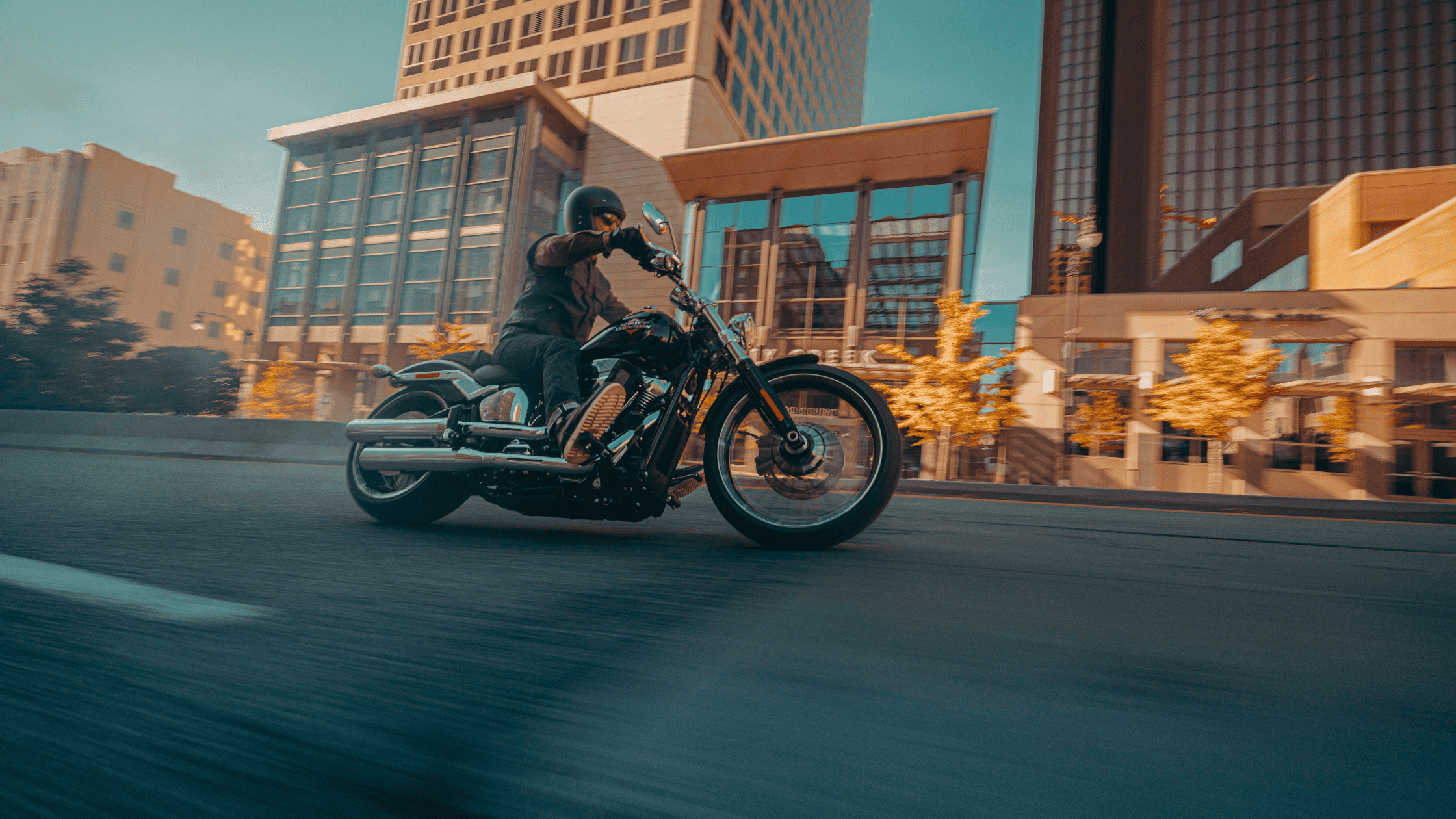2025 Harley-Davidson® Breakout® in Anderson, SC

The 2025 Harley-Davidson® Breakout® continues to occupy a focused space in the Softail® lineup. It integrates high-displacement engine performance with a stretched cruiser profile. For 2025, the model retains its recognizable design while incorporating upgrades in intake efficiency, ride control, and rider technology. Built around the Milwaukee-Eight® 117 Custom powertrain, the 2025 Harley-Davidson® Breakout® is developed for riders who prefer torque-heavy output, mechanical response, and a frame designed around visual symmetry and structural balance.
Powertrain Configuration and Engine Character
The 2025 Harley-Davidson® Breakout® is equipped with the Milwaukee-Eight® 117 Custom V-Twin engine. It displaces 117 cubic inches and uses air and oil cooling to manage thermal performance. Low-end torque is prioritized through its camshaft configuration and four-valve cylinder heads. Throttle response stays consistent across varying conditions, supported by electronic sequential port fuel injection and precise tuning of compression and exhaust systems.
The final drive uses a belt configuration, while a six-speed transmission handles power transfer. Gear ratios are spaced to accommodate both low-speed maneuvering and sustained highway travel without compromising throttle sensitivity.
Intake and Airflow Dynamics
The 2025 Harley-Davidson® Breakout® integrates a high-performance intake system. This component redesign focuses on airflow efficiency and thermal stability. The intake housing is constructed to channel cooler ambient air into the combustion chambers. The system works in tandem with the exhaust routing and ECU tuning to produce an optimized torque curve.
This results in improved combustion control, reduced throttle delay, and more predictable engine feedback across gears. Riders can expect reduced lag and a linear feel when increasing input at low and mid-range RPMs.
Chassis Geometry and Suspension Layout
The frame is a steel tubular design with a rigid-mounted powertrain to preserve the hardtail aesthetic while using hidden rear suspension for ride control. The front end consists of 49mm dual-bending valve telescopic forks with a rake angle of 34 degrees. Fork internals are designed to separate rebound and compression functions for better tracking over uneven surfaces.
The rear mono-shock uses an under-seat coil-over design with a hydraulic preload adjuster. This component is intended for tool-free tuning, enabling quick adjustments based on rider weight and cargo. Suspension travel is tuned to support low ground clearance while absorbing surface imperfections. The wide rear tire, sized at 240mm, enhances traction on straight acceleration. Combined with a 21-inch front wheel and 18-inch rear wheel setup, the stance supports high-speed stability without excessive vertical travel.
The aluminum wheels feature a 26-spoke cast design, contributing to both weight management and visual consistency. Michelin® Scorcher® 11 tires are fitted for surface grip and heat management across varied road conditions.
Braking System and Safety Enhancements
The 2025 Harley-Davidson® Breakout® includes standard front and rear disc brakes. The front braking system features a single 300mm disc with a four-piston fixed caliper, while the rear uses a disc with a two-piston floating caliper. The system includes standard anti-lock braking (ABS), which is integrated discreetly into the control system and does not interfere with rider inputs under normal operation.
Additional rider safety enhancements include cornering-enhanced traction control and drag-torque slip control, depending on ride mode. These systems function independently and adapt power delivery in real time based on lean angle and rear-wheel feedback.
Ergonomics and Control Placement
Rider interface is built around stainless steel drag-style handlebars mounted on tall risers. These provide a slightly elevated hand position to maintain leverage without requiring a full upright posture. The rider triangle includes forward foot controls and a low-profile solo seat, creating a neutral spine angle with forward reach. This configuration supports longer duration rides while keeping the rider in a command-oriented position for urban traffic conditions.
Switchgear is mounted within thumb reach and includes toggles for ride modes, lighting, and trip information. The clutch is cable-actuated, while braking is handled through a traditional hydraulic master cylinder and front lever.
Digital Interface and Technology Systems
Instrumentation is based on a 4-inch LCD digital display integrated into a round analog-style housing. This display includes gear position, odometer, fuel range, trip meters, clock, and tachometer functionality.
Selectable ride modes include Road, Sport, and Rain. These modes adjust throttle input curve, torque output, and traction control sensitivity. The system is managed through the ECU and can be changed on the fly using the handlebar control interface.
Other technology includes all-LED lighting, USB-C charging port, and an integrated security system. The lighting package provides consistent visibility during night riding and improved detection from other road users.
Bodywork, Materials, and Surface Treatment
The 2025 Harley-Davidson® Breakout® features a stretched 5-gallon fuel tank with a low-slung profile. The tank design includes a center-mounted analog speedometer with embedded digital readout, integrating mechanical and digital elements within a single housing. Paint applications are finished in high-visibility clear coat with durable surface treatment designed for long-term wear resistance.
The rear fender follows a bobtail design, which exposes more of the 240mm rear tire. This design is supported by concealed struts and internal wiring. The seat pan is sculpted for a tight fit and supports lateral movement control during cornering. Side covers and chain guard are integrated into the frame profile for consistent visual lines.
Overall Structural Focus
Each mechanical component on the 2025 Harley-Davidson® Breakout® is selected to serve both performance and layout integrity. The frame welds, fastener locations, and component clearances are designed for assembly efficiency and rider access. Critical maintenance points are unobstructed and tool-accessible. Electrical routing is concealed but remains serviceable through panel access.
The overall structure is built to preserve torsional rigidity while reducing vibration transference from the engine to contact points. The result is a chassis that allows engine movement without compromising steering or braking feedback.
